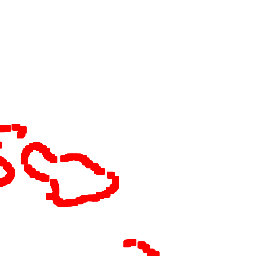Pacific Islands Ocean Observing System… |
|
Pacific Islands Ocean Observing System (PacIOOS) GeoServer Web Map Service (WMS)
http://geo.pacioos.hawaii.edu/geoserver/PACIOOS/hi_cred_all_tow_sites/ows
| Service health Now: |
|---|
- Interface
- Web Service, OGC Web Map Service 1.3.0
- Keywords
- WMS, PacIOOS, IOOS, ocean observing, Pacific, US Affiliated Territories, GeoServer, GeoWebCache
- Fees
- NONE
- Access constraints
- NONE
- Supported languages
- No INSPIRE Extended Capabilities (including service language support) given. See INSPIRE Technical Guidance - View Services for more information.
- Data provider
-
Pacific Islands Ocean Observing System (PacIOOS) (unverified)
Contact information:
Pacific Islands Ocean Observing System (PacIOOS)
Pacific Islands Ocean Observing System (PacIOOS)
Work:
University of Hawaii at Manoa, POST Building, Room 815, 96822 Honolulu, USAEmail:
Phone: +1 (808) 956-6556
- Service metadata
- No INSPIRE Extended Capabilities (including service metadata) given. See INSPIRE Technical Guidance - View Services for more information.
Ads by Google
GIS map layers from the Pacific Islands Ocean Observing System (PacIOOS) of the School of Ocean and Earth Science and Technology (SOEST) at the University of Hawaii at Manoa (UH). PacIOOS is one of eleven regional observing programs in the U.S. supporting the Integrated Ocean Observing System (IOOS). The PacIOOS region includes the U.S. Pacific Region (Hawaii, Guam, American Samoa, Commonwealth of the Northern Mariana Islands), the Pacific nations in Free Association with the U.S. (Republic of the Marshall Islands, Federated States of Micronesia, Republic of Palau), and the U.S. Minor Outlying Islands (Howland, Baker, Johnston, Jarvis, Kingman, Palmyra, Midway, Wake). These data are served via GeoServer in a variety of interoperable data services and output formats: http://geo.pacioos.hawaii.edu/geoserver/. See http://geoserver.org for further documentation; and GeoServer's Web Map Service (WMS) documentation at: http://docs.geoserver.org/latest/en/user/services/wms/. Supported map formats include PNG, JPEG, GIF, PDF, GeoTIFF, TIFF, KML/KMZ, AtomPub, GeoRSS, OpenLayers, SVG, UTFGrid, and others. Supported info formats include GeoJSON, GML, HTML, XML, plain text, and others. Please note that cached versions of some of our larger and more complex map layers exist in our GeoServer via GeoWebCache (GWC) using WMS-C. This would be the preferred method of accessing such data layers for improved access speeds: http://geo.pacioos.hawaii.edu/geoserver/gwc/service/wms?request=GetCapabilities&version=1.1.1&tiled=true. Use of WMS-C is similar to traditional WMS but with the addition of the "tiled=true" URL parameter, which triggers GeoServer to pull map tiles from GWC if they have been previously generated or to generate them for future usage if not.
Available map layers (1)
NOAA/PIFSC Towed Diver Survey Centroids: Main Hawaiian Islands (hi_cred_all_tow_sites)
Within the depth limits of safe, no-decompression SCUBA diving (generally to 90 feet depth), NOAA-certified Pacific Islands Fisheries Science Center (PIFSC) divers conduct towed diver surveys (TDS) as a method of assessing relatively large areas of reef habitat. This method involves towing two divers (one collecting fish data, the other collecting benthic data) behind a small surface craft that is moving at a velocity of 1-2 mph. Although the driver of the surface craft attempts to follow a depth contour, the divers also actively maneuver the "towboards" they are holding onto so as to maintain a relatively constant elevation above the surface of the reef. Towed-diver surveys are typically 50 min long and cover about 2-3 km of habitat. This map layer shows the centroid location of towed diver surveys conducted throughout the main Hawaiian Islands between the years 2005-2010.
There are currently no notifications for the service, click the feed icon to subscribe.


